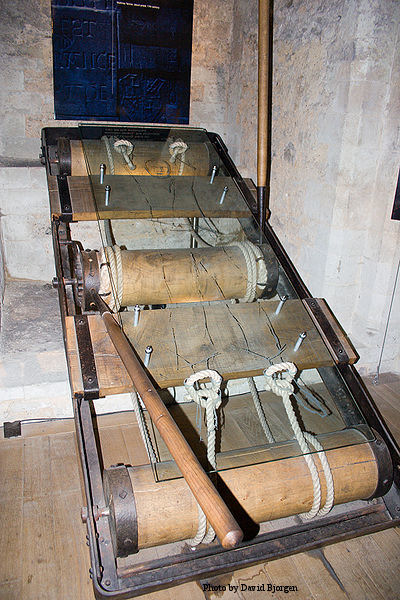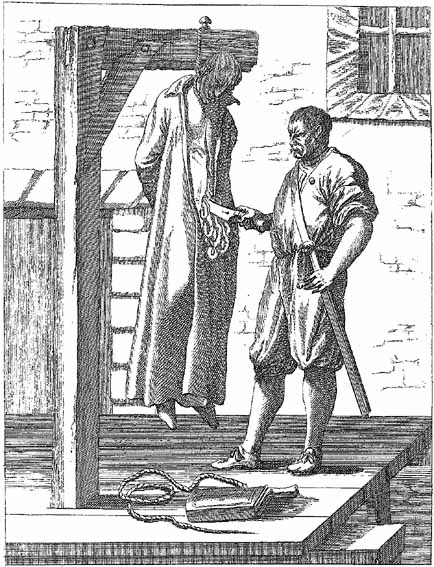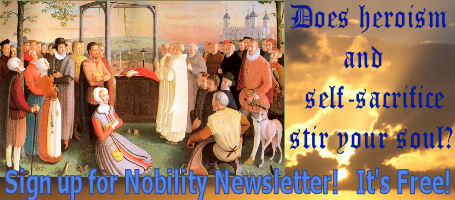St. John Boste
(Or JOHN BOAST.)

The Rack. The Rack-master, Richard Topcliffe, a Member of Parliament during the reign of Elizabeth I of England, was a fanatical persecutor of Catholics and the Church. He became notorious as a priest-hunter and torturer and was often referred to as the Queen’s principal “interrogator”. He claimed that his own instruments and methods were better than the official ones and was authorized to create a torture chamber in his home in London.
Priest and martyr, born of good Catholic family at Dufton, in Westmoreland, about 1544; died at Durham, 24 July, 1594. He studied at Queen’s College, Oxford, 1569-72, became a Fellow, and was received into the Church at Brome, in Suffolk, in 1576. Resigning his Fellowship in 1580, he went to Reims, where he was ordained priest, 4 March, 1581, and in April was sent to England. He landed at Hartlepool and became a most zealous missioner, so that the persecutors made extraordinary efforts to capture him. At last, after many narrow escapes, he was taken to Waterhouses, the house of William Claxton, near Durham, betrayed by one Eglesfield [or Ecclesfield], 5 July, 1593. The place is still visited by Catholics. From Durham he was conveyed to London, showing himself throughout “resolute, bold, joyful, and pleasant”, although terribly racked in the Tower. Sent back to Durham for the July Assizes, 1594, he behaved with undaunted courage and resolution, and induced his fellow-martyr, Bl. George Swalwell [or Swallowell], a convert minister, who had recanted through fear, to repent of his cowardice, absolving him publicly in court.

Hung, Drawn and Quartered. This barbaric form of execution, popular during the reign of Elizabeth I, where they are hanged till they are almost dead, cut down, and quartered alive; after that, their members and bowels are cut from their bodies, and thrown into a fire.
He suffered at Dryburn, outside Durham. He recited the Angelus while mounting the ladder, and was executed with extraordinary brutality; for he was scarcely turned off the ladder when he was cut down, so that he stood on his feet, and in that posture was cruelly butchered alive. An account of his trial and execution was written by an eye-witness, Venerable Christopher Robinson, who suffered martyrdom shortly afterwards at Carlisle. British Museum MS. Lansdowne, 75, f. 44; CHALLONER, Memoirs; SHARPE, Memorials of the Rebellion of 1569; FOLEY, Records, III; Catholic Record Society, Miscellanea (Christopher Robinson’s account), I; COOPER in Dict. Nat. Biog.; WAINEWRIGHT, Venerable John Boste (London, Cath. Truth Soc., 1907); GOLDIE, The Martyr of Waterhouses in Ushaw Magazine, 1902, 1903. Bede Camm.
He was canonized in 1970 by Pope Paul VI and is one of the Forty Martyrs of England and Wales.









